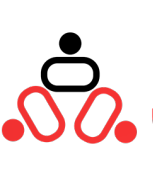The saying 'don't judge a book by its cover'
might be true for other spheres of life, but when it comes to workplace environments, immediate impressions based on the outlook have an instant impact on the audience and contribute a great deal to the professional persona of the employees.
The dictionary of body language greatly relies on visual cues of dressing at the workplace. The attire needs to be formal yet welcoming and approachable, ensuring the perfect balance of the ideal corporate conduct. This is imperative not only in its contribution towards reception by the clients and co-workers but also on an individual level for the person themselves to feel confident and capable in their own skin at their workplace. The clothes reflect and compliment the body language as there is a strong association between attire and attitude. In the knowledge of this fact, the fashion industries provide a diverse variety of clothing lines corresponding to the desired professional outlooks accommodating the authoritative, managerial, and other workplace outlooks with the specificity of color, fabric, and designs.
The body language however transcends beyond clothes.
One may see clothing as a mere medium for a mannerism that is much more innate. The body language for a work place is an acquired skill that needs constant refurbishing and keeping up with the times. It is an amalgam of all the work place ethics of behaviour and communication.
From a firm handshake in a meeting to holding a cup of tea in the private office, the dictionary of body language must be assimilated in every aspect of one’s conduct. It is a subtle language of its own yet it communicates very clearly without any words. Interestingly, research shows that conduct-related complaints to the Human Resources department had more to do with misplaced body language cues rather than any actual words or direct actions themselves.
Mannerisms that were offensive, rude or closed off such as staring, arm-crossing, refusing to shake hands, walking away while another is speaking, bumping into people in the hallways were often seen as unprofessional body language gestures.
As the definition of the workplace environment changes, so do the rules for professional conduct. Nowadays the ideal workplace body language is a blend of formality, style, and comfort. Whereas decades ago, professionalism was synonymous with rigidity.
However, in our progressive and technological age, openness and client-patron relationships are the prime focus, ensuring that the body language cues contribute towards trust-building. A lot of HR departments have a manual on educating and informing what is considered an adequate dictionary of body language. This further builds confidence, improves working relationships, yields greater work results, and ensures the mental well-being of the employees by providing a safe and friendly work environment.

